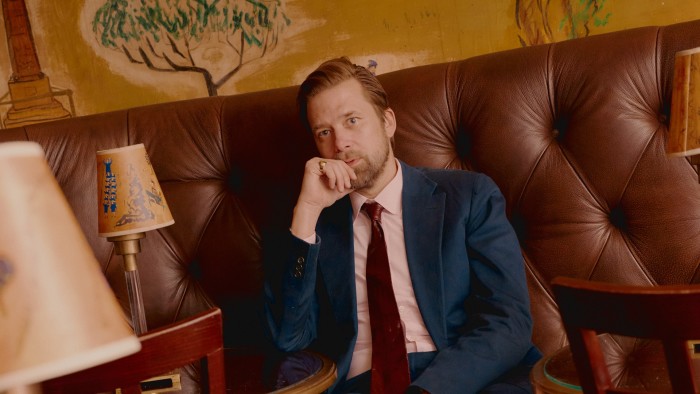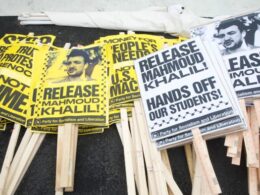Unlock the Editor’s Digest for free
Roula Khalaf, Editor of the FT, selects her favourite stories in this weekly newsletter.
In my careless youth, I wasn’t always so well-behaved in the world’s great hotels. I climbed out of a window and traversed a three-storey drop to enter a party in a neighbouring suite at LA’s Chateau Marmont; I also swam naked in its pool. I passed out at dawn on a friend’s sofa at the Ritz Paris. I hosted an afterparty from my bathtub at the Alvear Palace in Buenos Aires. These stories of hotel debauchery have aged about as well as the minor characters who populate them. But even at my worst, I was always on my best behaviour at New York’s Carlyle Hotel.
This choir-boy approach isn’t simply because the hotel and I share a hometown. Although it does have everything to do with the fact that the art deco icon holding court on the north-east corner of Madison Avenue and East 76th Street captures the increasingly rare beat of old-school New York City. You want to bring your best self to it, your nicest clothes and your polished manners. You need this place more than it needs you.


I write thrillers about morally lukewarm people who find themselves in a world of trouble. I’m a sucker for a seductive backdrop, and the bars and lobbies of grand hotels put you in close contact with a startling range of human desires and motivations – maybe it’s the freedom of not being at home. The Carlyle is one such carnival of fascinating characters. An Irish heiress I knew fled here when her bathtub overflowed and caused several lawsuits of damage to her co-op; she lived out of the hotel for years. One legend has it that Marilyn Monroe used a secret tunnel in the basement to conduct her affair with JFK. But I’m more intrigued by the denizens in the lobby whose backstories I don’t fully recognise. The middle-aged woman dressed in red silk with a manilla envelope on the table in front of her, gazing up every time someone enters. The Italian tennis player with five racquets and a suit bag.
The first time I saw the inside of The Carlyle was in Woody Allen’s 1986 comedy Hannah and Her Sisters, where Allen’s character takes a coked-up Dianne Wiest, playing one of the sisters, to hear a set by the legendary pianist Bobby Short. I moved to New York in 1996 as a penniless college student who didn’t own a suit, and it was several years before I saw the inside for myself. That opportunity arose almost a decade later, when a friend invited me to watch her father, Steve Tyrell, perform at the Café Carlyle, the hotel’s cabaret and jazz club. By then I owned a suit and felt at home in the crowded jigsaw of tables, the tuxedoed waiters expert contortionists in reaching customers with oysters and drinks.

Not long after, another friend brought me to see Woody Allen play with his Monday-night jazz band. We nabbed a table so close to the stage I could have held up the horn of Allen’s clarinet. I saw Elaine Stritch wisecrack and belt out Sondheim in one of her last performances at the Café. Later, I watched my friend Zadie Smith take the stage to sing the blues during a set by Jon Batiste.
There are 192 rooms in The Carlyle, and I have slept in none of them. But that doesn’t make it any less mine. Most hotels belong to tourists. The Carlyle is, at heart, a city institution, a local’s grazing ground, much like MoMa a few blocks north or the Chrysler Building. Beyond the brass revolving doors at the entrance lies Bemelmans Bar, the moody cocktail lounge wrapped in droll murals painted by its namesake artist and author of the Madeline children’s books, Ludwig Bemelmans. Go further and you’ll find the Turkish-bohemian tea salon and the tucked-away, photo- and illustration-clad restaurant, Dowling’s.

These retreats have always been a discreet haven for the rich and high-rolling, presidents and film stars, bon vivants and artists manqué. Jackie O regularly ate lunch at the same table in the back corner (cobb salad and a G&T was her standing order). So did her son, hot off a spin through Central Park on a pair of rollerblades. And yet, you’ll also find a retired stockbroker with horseshoe cufflinks and a penchant for stirred Martinis, eyes closed as he listens to Earl, one of the bar’s resident pianists.

The Carlyle feels like the safest spot in the city. But the city in question is still New York. I recently came across a newspaper article from 1977 about an attempted robbery by a band of thieves who entered the lobby just before dawn in wigs and fake moustaches, hoping to crack into the manager’s safe. They fled without a cent, leaving their disguises behind. Evidently the band had been targeting the poshest hotels of the era, like The Plaza and The Pierre.
It’s my kind of crime syndicate to have such discerning taste. In fact, there happens to be a crime underway at The Carlyle every hour of the day: amid Bemelmans’ jaunty Central Park murals of rabbits in bow ties and elephants enjoying a bandshell concert, one drawing shows a man in a topcoat and stovepipe hat with his hands in the air, held up by a mugger lurking in one of the park’s underpasses. Bemelmans had a novelist’s instinct. He knew a dab of mischief and danger brings the whole garden to life.
Havoc by Christopher Bollen is published by HarperCollins at £16.99
Source link









